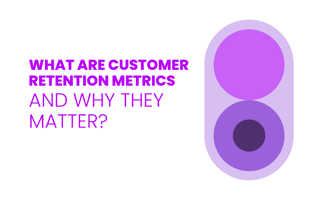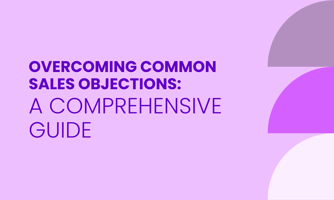Change is inevitable in any business environment. With a well-structured change management plan,...
Create a Winning Revenue Operations Strategy - 10 Tips
Revenue Operations, or RevOps, has become a vital point of convergence, integrating sales, marketing, and finance to drive efficiency and growth.
It's a comprehensive approach that aligns every customer-facing department and their processes to achieve the ultimate goal: to increase revenue potential and operational efficiency.
At 180ops, we specialize in empowering businesses to excel in their Revenue Operations. Through insightful strategies and utilization of advanced revenue intelligence technology, we ensure that our partners not only grasp their full growth potential but also turn data into meaningful action.
We have curated a list of ten actionable tips to enhance your Revenue Operations strategy, leveraging our expertise to guide you to success.
Tip 1: Align Sales, Marketing, and Customer Success
Aligning sales, marketing, and customer success is the cornerstone of a winning Revenue Operations strategy.
It ensures that your teams work together towards a unified goal instead of in silos, which can fragment efforts and obscure insights. Pioneering a cohesive approach is crucial for meeting today's revenue goals and creating a sustainable growth model.
Benefits
When sales, marketing, and finance move in unison, the impact on revenue goals can be astounding. According to research, aligned teams are 67% better at closing deals, a statistic that underscores the power of collaboration. Aligned teams also ensure a smoother customer journey, increasing the likelihood of success across all points of interaction.
Best Practices
-
Auditing and Mapping: Begin by conducting an audit of current processes to pinpoint disconnects. Map the customer journey to ensure that all departments have visibility and understand their role in each stage.
-
Shared Goals and KPIs: Establish common goals and key performance indicators (KPIs) that reflect the combined efforts of sales, marketing, and customer success. This creates a unified dashboard for tracking progress and success.
-
Regular Cross-Departmental Meetings: Foster an atmosphere of open communication with regular meetings across departments to discuss strategies, learnings, and insights. Shared learning promotes a more informed and agile organization.
Aligned teams are 67% better at closing deals, highlighting the impact of collaboration on revenue growth.
Tip 2: Leverage Data and Analytics in RevOps Decision-making
![]()
Harnessing data and analytics is key for Revenue Operations to deliver insights that drive strategic decision-making. With an ever-growing abundance of data at our fingertips, it’s crucial to pinpoint what truly matters to your organization’s success.
Benefits
Data-driven decision-making in RevOps paves the way for understanding market trends, customer behaviors, and operational efficiency. A well-structured data analytics approach can provide your Revenue Operations team with a clear perspective on what to sell, to whom, and why, ultimately guiding your sales, marketing, and finance efforts to align seamlessly with your business goals.
Best Practices
-
Minimum Viable Data: Embrace the "Minimum Viable Data" model, focusing on the most impactful datasets to prevent analysis paralysis. This streamlined approach allows for quicker, more informed decision-making without sifting through irrelevant information.
-
Role-based Dashboards: Create role-based dashboards that provide tailored insights for different teams within your RevOps. For example, a marketer may need different data views than a salesperson or a finance manager.
-
Forecasting and Reporting: Employ tools that offer sophisticated reporting and forecasting capabilities. This enables your team to predict trends, set realistic goals, and assess performance against those metrics.
Incorporating concrete data practices into your RevOps can power your strategy forward. We at 180ops offer a suite of tools that facilitates this process, analyzes customer trends, and enhances forecasting.
A data-driven approach provides clear perspectives on what to sell, to whom, and why, aligning your business goals with market needs.
Tip 3: Implement Technology and Automation in Revenue Operations
Incorporating technology and automation into Revenue Operations is a game-changer for enabling efficiency and scalability. Automation not only streamlines workflows but also frees up valuable time for revenue-generating activities, ultimately impacting your bottom line positively.
Benefits
By reducing manual tasks with automation, your team can focus more on strategic initiatives. Automation and behavior change can reduce up to 40% of time spent on manual tasks, thus significantly enhancing productivity.
Additionally, automated systems provide consistent data handling and processing, leading to reliable and timely insights essential for revenue growth.
Best Practices
-
Audit Existing Processes: Evaluate your current processes to determine where automation can yield the greatest benefits. Look for repetitive tasks that consume excessive time.
-
Choose Scalable Solutions: Select technology that can grow with your company. Solutions like our SaaS finance and Revenue Operations software adapt to your evolving needs, ensuring long-term value.
-
Continuous Learning and Adaptation: Embrace a culture of continuous learning to keep abreast of new technologies and automation trends. Equip your team with the skills to leverage these tools effectively for maximum impact.
Automation can reduce up to 40% of time spent on manual tasks, thereby amplifying productivity and driving revenue.
Tip 4: Optimize RevOps Processes for Growth
Optimization of Revenue Operations processes is a continuous journey, one that is essential to unlocking sustained growth. It's about fine-tuning systems and procedures to enhance efficiency, drive sales and ensure customer success.
Benefits
Optimizing RevOps processes leads to an accelerated path to revenue goals and market adaptation.
By refining processes, companies can achieve better alignment between departments, establish clearer communication channels, and benefit from more agile and responsive operations. This operational excellence contributes directly to revenue growth and customer retention.
Best Practices
-
Define Clear Processes: Establish and document clear processes for key RevOps activities. This aids in reducing ambiguity and enhancing accountability.
-
Monitor and Analyze KPIs: Implement a system to consistently monitor and analyze KPIs to track performance and pinpoint areas for improvement.
-
Encourage Feedback Loops: Create feedback mechanisms that allow team members to contribute to process enhancement, fostering a culture of continuous improvement.
Optimizing your RevOps processes can lead to improved alignment, more agile operations, and ultimately, significant revenue growth.
Tip 5: Continuous Improvement, Training, and Development in Revenue Operations
![]()
Embedding a culture of continuous improvement, training, and development within your RevOps framework is not simply about adapting to change—it's about being a proactive force for innovation and performance within your organization.
Benefits
By investing in continuous learning, companies can foster a responsive and proactive RevOps team capable of adapting to evolving market trends and customer needs. A well-trained team is more efficient, capable of providing in-depth insights into customer behavior, and better equipped to drive revenue growth.
Best Practices
-
Invest in Skills Development: Regularly provide training and resources to keep your RevOps team's skills sharp and current. This could include training on new technologies, sales strategies, or data analysis techniques.
-
Promote Cross-Departmental Learning: Encourage learning across different areas of the business to foster empathy and a deeper understanding of various roles within the customer journey.
-
Implement Feedback Systems: Cultivate a transparent environment where feedback is valued and used constructively to improve processes and personal development.
Investing in continuous learning and skills development ensures a RevOps team that's adaptable, innovative, and aligned with market dynamics.
Tip 6: Enhance Customer Experience Through Customer Journey Mapping
Customer experience is an increasingly critical competitive differentiator and journey mapping is a powerful tool to enhance this experience. It promises personalized interactions that can transform satisfaction into loyalty and value.
Benefits
Strategic journey mapping allows for a deep understanding of the customer experience, leading to tailored engagements that resonate with the customer's needs and expectations.
Comprehensive journey mapping can result in higher customer retention rates, as 32% of customers would stop doing business with a brand after just one bad experience.
Best Practices
-
Start with Customer Research: Collect data and insights to understand your customers' perspectives, concerns, and desired outcomes throughout their journey.
-
Map Out Touchpoints: Identify all potential customer touchpoints and evaluate the current experience at each. Look for areas of friction that could be smoothed out.
-
Align Internally: Ensure all customer-facing teams are aligned on the journey map and understand their role in delivering a cohesive experience.
Comprehensive journey mapping can result in higher customer retention rates, as 32% of customers would stop doing business with a brand after just one bad experience.
Tip 7: Cross-functional Collaboration
Cross-functional collaboration is the strategic unification of different departments to work toward shared business goals. It is a force multiplier for any Revenue Operations strategy, as it draws on the diverse strengths and perspectives of each department, fostering innovative solutions and driving business growth.
Benefits
The fusion of sales, marketing, and finance under a cross-functional lens enhances decision-making and brings a 360-degree view to strategy formulation. Such alignment can break down silos, allowing for the seamless exchange of ideas and strategies that propel the company forward.
Best Practices
-
Create a Collaborative Culture: Promote a culture that values different perspectives and encourages open dialogue between departments.
-
Utilize Collaborative Tools: Invest in technology that supports collaboration, such as SaaS tools with role-based dashboards designed to share insights across departments seamlessly.
-
Develop Cross-Department Objectives: Set objectives that require collaboration to achieve, thereby encouraging departments to work together proactively.
Cross-functional collaboration can break down silos, allowing for the seamless exchange of ideas and strategies that propel the company forward.
Tip 8: Change Management in Adopting RevOps Strategy
![]()
Change management is an integral component when transitioning to a RevOps strategy. It involves preparing and supporting individuals and teams to adopt new processes and technologies to drive organizational success.
Benefits
Effective change management can significantly increase the likelihood of success for new initiatives. It reduces resistance, increases engagement, and ensures that new strategies are adopted smoothly, with minimal disruption to ongoing operations.
Best Practices
-
Communicate Clearly and Early: Openly communicate the reasons for change, the benefits, and the impacts on individuals and teams.
-
Engage with Stakeholders: Involve key stakeholders in the planning and implementation stages. Their buy-in and support are crucial for successful change adoption.
-
Provide Training and Support: Equip your team with the necessary training and resources to adapt to new systems and processes comfortably.
Effective change management fosters engagement, eases the adoption of new strategies, and amplifies the chances of successful implementation.
Tip 9: Integrate Software and Platforms for Real-Time Insights in RevOps
Integrating software and platforms that provide real-time insights is fundamental for a dynamic and responsive Revenue Operations approach. Access to instantaneous data empowers teams to make informed decisions quickly and accurately.
Benefits
Timely insights afford businesses the agility to adapt to changing market conditions and customer needs. Enhanced connectivity leads to an average 20-25% increase in employee productivity, which directly influences the effectiveness of your RevOps strategy.
Best Practices
-
Consolidate Data Sources: Streamline data from various touchpoints into a centralized platform for consistency and ease of access.
-
Adopt User-Friendly Interfaces: Choose platforms with intuitive interfaces to ensure that all team members can utilize them effectively.
-
Ensure Data Security: Implement software solutions with robust security features to protect your data and maintain customer trust.
Leveraging real-time insights is critical in today's fast-paced business environment. Our suite of tools at 180ops offers a seamless integration of platforms designed to provide the clarity and immediacy needed for optimal RevOps success.
Real-time insights enable businesses to make quick, informed decisions, enhancing agility and boosting productivity by 20-25% on average.
Tip 10: Utilize Customer Segmentation and Personalization to Optimize the Sales Funnel
Customer segmentation and personalization are pivotal strategies for tailoring the sales funnel to meet diverse customer needs. By understanding and grouping your customer base into distinct segments, you can curate experiences and communications that resonate more deeply with each group.
Benefits
Personalized marketing strategies can dramatically increase engagement and conversion rates. By addressing customers' unique preferences and pain points, companies can foster stronger relationships and boost customer loyalty, thereby enhancing customer lifetime value.
Best Practices
-
Leverage Behavioral Data: Utilize customer behavior data to inform your segmentation and to tailor messaging that aligns with their behaviors and preferences.
-
Test and Iterate: Continuously test different approaches within each segment. Use the insights gained to refine and enhance personalization strategies.
-
Integrate Systems for a Unified View: Use integrated software solutions to maintain a unified and detailed view of customer interactions across all platforms.
Personalization based on customer segmentation can create powerful connections, significantly increase conversions, and foster loyalty.
Conclusion
Crafting a winning Revenue Operations strategy is a blend of alignment, data-driven insights, technology integration, continuous improvement, and customer-centric tactics.
It's about embracing the full breadth of data and cutting-edge tools to optimize operations and drive revenue upward. Through strategic planning and the right assistance, businesses can not only achieve their revenue goals but also ensure customer success across the board.
At 180ops, we advocate for strategies that place insights at the center of decision-making, unveiling opportunities for growth and streamlined efficiency. We encourage organizations to delve into the capabilities of AI and machine learning-driven solutions, designed to offer unparalleled clarity and guidance in Revenue Operations.
By integrating these principles into your Revenue Operations, you not only foster a culture of continuous improvement but also solidify your foundation for success.
FAQ
What are the first steps to developing a B2B Revenue Operations strategy?
Begin by defining clear revenue goals and objectives. Conduct a comprehensive audit of current sales, marketing, and customer success processes to identify gaps and inefficiencies. Ensure data integration across all customer touchpoints to maintain a unified view of the customer journey. Establish a collaborative framework that aligns all revenue-related teams (sales, marketing, customer success) towards common goals.
What are the key components of a demand gen strategy within Revenue Operations?
A successful demand gen strategy includes targeted content marketing to attract the right audience, SEO and SEM for increased visibility, lead nurturing programs to move leads through the sales funnel, and performance metrics to measure the effectiveness of demand gen activities. Integration with sales processes ensures that leads are effectively converted to customers.
What steps should companies take to align their marketing and sales teams under a unified Revenue Operations strategy?
Companies should start by establishing shared goals and KPIs for both sales and marketing teams. Regular cross-functional meetings can facilitate communication and alignment. Implementing a Service Level Agreement (SLA) between sales and marketing ensures accountability and sets clear expectations for lead quantity and quality. Utilizing a shared CRM system can help maintain alignment by providing both teams with visibility into the sales pipeline and customer interactions.
What role does marketing automation, like HubSpot, play in a successful B2B Revenue Operations framework?
Marketing automation platforms like HubSpot are central to an efficient B2B Revenue Operations strategy. They streamline lead generation, nurturing, and scoring processes, ensuring that only high-quality leads are passed to sales. Automation tools also provide valuable insights into customer behaviors and campaign performance, allowing for data-driven decisions. Additionally, they facilitate better alignment between sales and marketing by integrating various functions and communication channels within a single platform.




